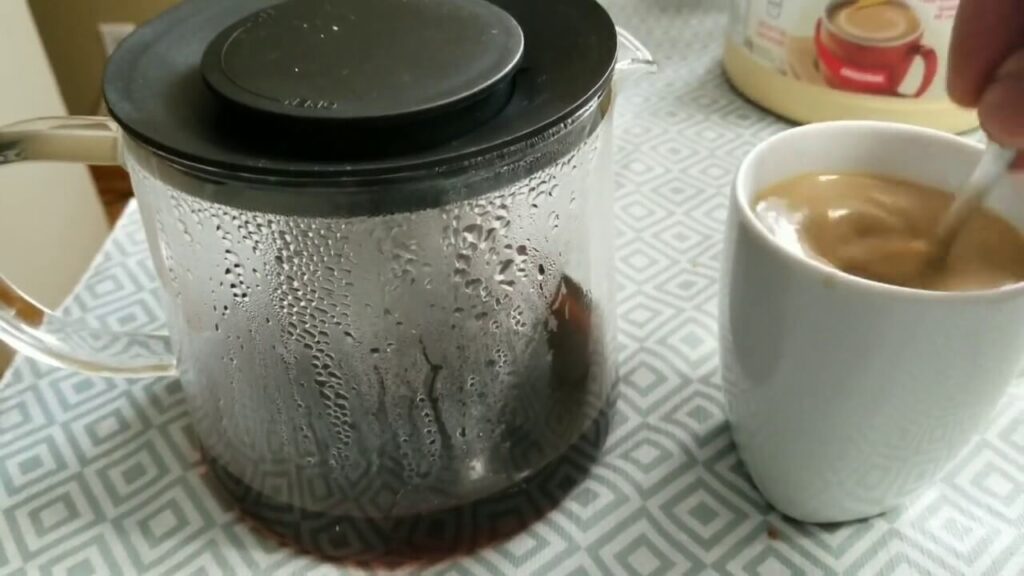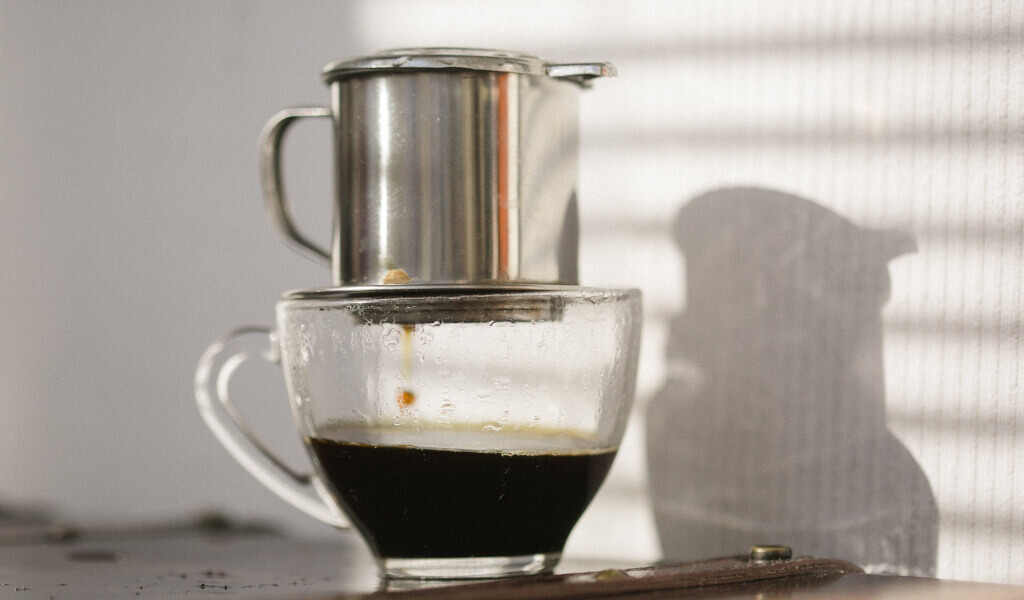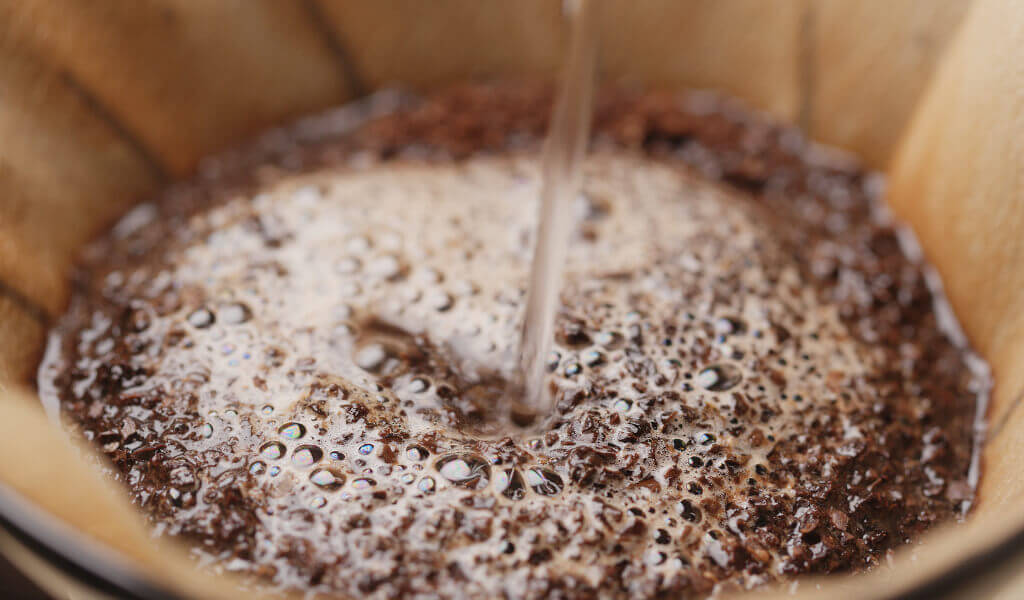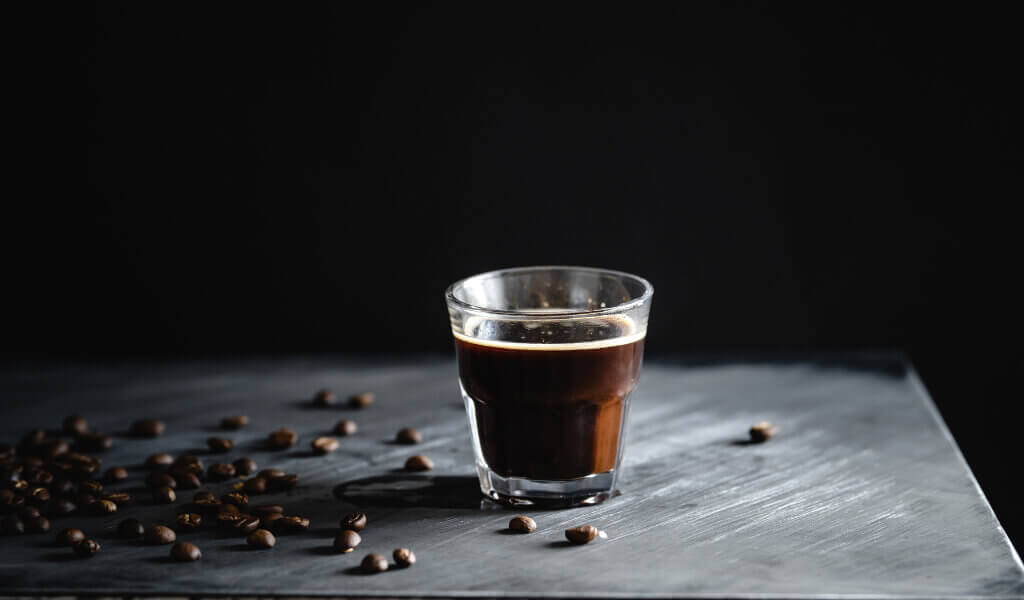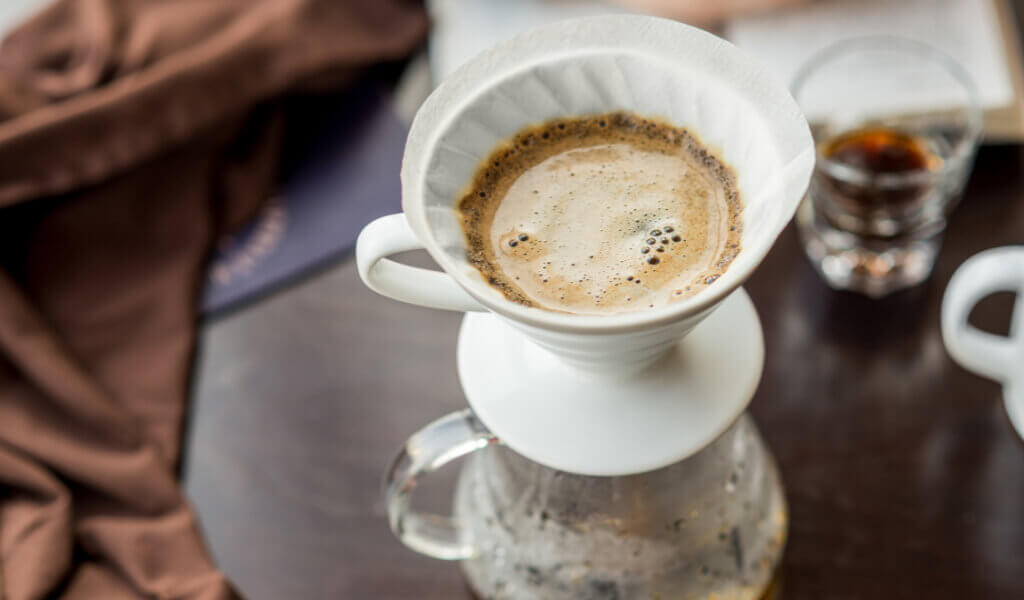Ever wondered, “Can you make coffee with a tea infuser?” Well, you’re not alone in this brewing curiosity.
This unique method may seem unconventional to some but believe it or not, brewing coffee in a teapot has its charm.
We often associate teapots with tea, but they can also offer an interesting twist to your daily coffee routine.
This article explores the ins and outs of brewing coffee in a teapot, provides a step-by-step guide, and dives into the delightful fusion of coffee-tea culture.
Read More: Top 8 best Teapots you must have
Can you make Coffee in a Teapot?
You can utilize various tea infusers available at home to make fantastic coffee. Tea balls, tea bags, and teapots can all be used for brewing coffee. In fact, serving coffee in a teapot is a wonderful way to impress your friends.
I tried this myself when my coffee machine was nowhere in sight. The process is quite simple and uses tools commonly found in our kitchens.
The procedure is straightforward: use a teapot with a tea filter, grind 18 grams of coffee coarsely, boil 250 grams of water, and add it to your teapot. Add the ground coffee to the filter, let it steep for 5 minutes to allow full flavour extraction, and you’re done.
Now that I’ve determined you can make coffee in a teapot let’s explore how to brew using a tea infuser.
How to make coffee with a tea infuser: My Personal Guide
First, discuss the tools and ingredients for this unconventional coffee brewing method.
Tools and Ingredients
- A Tea Ball or Infuser: You can also use a nut milk bag to hold the coffee grounds.
- A Saucepan or Kettle: This is for boiling your water.
- A Teapot: The hero of our brewing method!
- Fresh Coffee Grounds: Opt for coarser grounds to avoid over-extraction and a sour coffee taste. Fine grinds slow down the water, leading to an unpleasant flavor.
- Fresh Water: The essential base for every great cup of coffee.
How to make coffee with a kettle: Brewing Steps
With our tools and ingredients ready, let’s move on to the actual process on how to make coffee in a kettle. I’ve found that the following steps deliver a fantastic cup of coffee when using a teapot:
- Start by boiling your water in a saucepan or kettle.
- While the water heats, fill your tea ball, infuser, or nut milk bag with coffee grounds. I recommend using about one tablespoon of coarsely ground coffee per cup of water. The key here is to ensure your chosen holder has small holes or a fine weave to prevent coffee grounds from invading your cup.
- Once your water is boiling, place the coffee-filled tea ball, infuser, or nut milk bag into your teapot.
- Pour the boiling water into the teapot.
- Let the coffee steep for about three minutes, then give it a good stir.
- Allow it to sit for another three minutes, then remove the tea ball, infuser, or bag.
- Finally, pour your coffee and savour your handiwork!
I can assure you that the teapot method delivers a uniquely delicious brew. Give it a try, and enjoy a new way to experience your coffee!
After discussing how to use a tea infuser for brewing coffee, it’s only natural to ask:
Can I Use Any Other Filter to Brew My Coffee With?
Certainly, other filters can step in when your primary coffee brewing device, such as a Chemex, is unavailable. You can make use of the Chemex filter itself differently while you wait for a replacement.
How? Place the coffee filter in a large coffee mug filled with hot water. Add your coarsely ground coffee beans to the filter, and let it steep for about 4 minutes. This method extracts some delightful coffee oils, creating a distinct flavour profile.
The result might be a slightly weaker, more watery coffee than you’re used to, but don’t worry. If you want to intensify the flavors, leave the coffee filter in your cup longer.
However, be careful to only over-extract your coffee by steeping briefly. Based on my experience, I would caution against going beyond the 8-minute mark with this brewing technique.
In short, when it comes to brewing coffee, the options are as limitless as your creativity, and you can use different types of filters, including a Chemex filter, to brew your coffee.
Since we’ve covered how other filters can be used, we should answer a key question:
Why should I use a tea infuser to brew my coffee?
A tea infuser can rescue you when a coffee brewer isn’t accessible, offering a practical and convenient solution to your coffee cravings.
Imagine being out hiking, surrounded by nature, craving that comforting cup of joe, but you only have a tea filter bag with you. Well, that’s where these methods shine.
By using a tea infuser or teapot to brew your coffee, you can ensure that you’ll never be without your beloved brew, even in the most unlikely of circumstances. These versatile tools, often underestimated, can deliver a great cup of coffee exactly when you need it most.
Having understood why to use a tea infuser, let’s delve into the best coffee grind for this brewing method.
Read More:
- How do you make tea with teabags in a Teapot?
- Here is My ultimate guide on Type Of Teapot
- How to clean a Teapot – Videos and detailed illustrations
- How To Remove Tea Stains? Videos and images with detailed instructions
Which Coffee Grind Will Work Best?
I’ll delve into the coffee brewing techniques shortly; your best bet is to use a coarse coffee grind, akin to what you’d use for cold brew coffee in tea infuser.
Why a coarse grind? Using a finer grind can result in the over-extraction of your coffee beans, leaving you with an undesirable, sour-tasting cup of joe. To paint a clearer picture, coarse-ground coffee beans have a distinct, chunky appearance.
Regardless of the type of tea infuser you employ for your brewing experiment, this coarse grind will ensure an even and balanced extraction. So, remember that when brewing coffee with a tea infuser or teapot, a coarse coffee grind is your trusty companion for a satisfying brew.
With the right grind in mind, it’s time to taste and compare how coffee brewed in a teapot stands up against other brewing techniques.
How Does Coffee Brewed in a Teapot Taste Compared to Other Brewing Techniques?
Brewing coffee using a teapot or tea infuser with coarsely ground beans, as I’ve previously mentioned, imparts a natural coffee taste that’s akin to French press coffee. French press, another method that steeps coffee grounds directly in water, delivers a similar full-bodied mouthfeel.
The comparison doesn’t stop there. Coffee made with a tea infuser shares close ties with the flavour profile of French press coffee. This resemblance comes from the brewing process: steeping coarsely ground coffee in water, a method common to both techniques.
What about the difference between pour-over coffee? Here, using a tea infuser can give you a brighter cup. Pour-over coffee often involves a paper filter that can absorb some coffee oils, subtly muting its flavour. In contrast, brewing with a tea infuser allows these natural oils to flow into your cup, enhancing the overall flavour.
If you’re looking for a taste reminiscent of French press coffee and potentially more flavorful than pour-over, brewing coffee in a teapot or with a tea infuser might be the method you’ve been seeking.
Tasting comparisons aside, I’d love to share how to make a delightful cold brew coffee using a tea infuser.
How to make cold brew coffee with tea infuser
Last Friday, while enjoying a casual evening at my place, a friend introduced me to a fascinating method of brewing cold-brew coffee. It intrigued me instantly because the method involved an incredible piece of equipment – a simple tea filter bag. Intrigued, I decided to try it myself.
Cold brew coffee, loved for its low acidity and smooth flavour, can be easily made using tea filter bags. It’s incredibly straightforward, serving a delightful cup without complicated brewing equipment.
Start with a tea filter bag and about 20 grams of coarsely ground coffee beans. Fill the bag with the coffee, and then it’s time to introduce the cold water. I poured 200 grams of cold water into a cup and added the coffee-filled tea bag.
Now comes the hard part – the waiting. Cold brewing is a slow process, so you must be patient. Leaving the tea bag steeped in the water for up to 12 hours allows the coffee to extract slowly, producing that classic cold brew taste.
This method significantly simplifies the process compared to other methods like the French press. With a French press, you’d have to clean it thoroughly after use, but with a tea filter bag, once your coffee is ready, you must discard the used bag.
This tea filter bag technique is a convenient and clean way of making cold brew coffee, particularly for single servings. Not only has it added a new twist to my coffee routine, but it has also saved me from a lot of cleaning!
Now that you know the cold brew method, let me share my adventure brewing coffee using a tea ball.
My Adventure with Brewing Coffee Using a Tea Ball
In my coffee-brewing escapades, I’ve encountered a fun and unconventional method of brewing coffee – using a tea ball. Indeed, a tea ball is the subject of discussion here! If, like me, you possess tea balls at home that are seldom used (because I prefer tea filter bags), you might be intrigued by this approach.
Like the tea filter bag method, brewing coffee with a tea ball is straightforward and uncomplicated. The size of your tea ball matters here, as that will determine the amount of coarsely ground coffee you can fit in and the brewing time. In my case, I could fit 12 grams of coffee in my single-serving tea ball.
The process is easy: boil 250 grams of water, and pour it into your favourite cup. Place the coffee-filled tea ball in the cup and let it steep. For my tea ball size, a 4-minute steep was perfect, but if you have a bigger tea ball, you might need to adjust the steeping time accordingly.
After trying it myself, this is indeed one of the most fun and convenient ways to make coffee at home.It’s different, as the coffee may taste slightly more watery than you’re used to, but it’s a refreshing change. And it’s a fantastic way to put those tea balls to use!
From cold brew coffee using a tea bag to hot brew using a tea ball, these tea accessories offer unique and enjoyable ways to make your favorite beverage. Don’t shy away from trying them out; you might discover your new favorite method!
Having shared my tea ball experience, we must address common pitfalls to avoid when brewing coffee in a teapot.
Common Pitfalls to Sidestep When Brewing Coffee in a Teapot
You might make a few common mistakes while brewing coffee in a teapot. It’s crucial to avoid these to ensure your cup of joe turns out just right.
Selecting an Inappropriate Teapot
If your teapot doesn’t fit these criteria, you might find your brew lacking quality or dealing with stray coffee grounds in your cup. So, select the appropriate teapot, just as we discussed earlier.
Falling into the Over-Extraction or Under-Extraction Trap
Using fine grinds or letting the coffee steep for too long can lead to over-extraction, leaving you with a bitter or sour cup.
Conversely, under-extraction can occur if your grinds are too coarse or your steeping time needs to be longer, resulting in a weak or watery brew.
I suggest sticking to the suggested coarse grind and 6-minute steeping time for the best results.
Overlooking Proper Teapot Cleaning After Use
After savouring that delicious teapot coffee, you might be tempted to put off a cleaning, but I strongly advise against it. Coffee oils and residue can build up in your teapot and negatively affect the taste of your future brews.
More than a simple rinse might be required – be thorough, clean every nook and cranny, and ensure your teapot is ready for your next coffee brewing adventure.
Thanks for Spiritea Drinks
FAQs
Can You Use the Same Teapot for Coffee and Tea?
Yes, you can use the same teapot to brew coffee and tea. However, cleaning it thoroughly after each use is essential to prevent the flavours from mingling and affecting the taste of your brew.
What Kind of Coffee Grounds are Best for Teapot Brewing?
Coarse coffee grounds are the best choice for brewing coffee in a teapot. Using coarsely ground coffee prevents over-extraction and avoids a sour or bitter taste, making your coffee experience delightful.
How to Clean a Teapot After Brewing Coffee?
To clean a teapot after brewing coffee, rinse it with warm water, use a mild detergent, and scrub lightly to remove coffee residue. Rinse thoroughly to ensure no soap residue remains. Regular cleaning prevents the buildup of coffee oils that could alter the taste of future brews.
How to Make Coffee Without a Coffee Maker?
You can easily make coffee without a coffee maker by using a teapot. Place coarsely ground coffee in a tea infuser, pour boiling water over it, and let it steep for about six minutes. You’ll have a delicious brew in no time!
Can You Make Espresso in a Tea Kettle?
Making an espresso in a tea kettle isn’t typically recommended. Espresso requires high pressure for extraction, which a tea kettle cannot provide. However, you can make a strong cup of coffee in a tea kettle, but it won’t have the same intensity or flavour profile as espresso.
Can You Make Coffee in a Cast Iron Teapot?
Yes, you can brew coffee in a cast iron teapot. However, be mindful of the teapot’s heat retention properties; cast iron retains heat longer, which could lead to over-extraction if the coffee is too steep. Always ensure thorough cleaning to prevent the taste of your coffee from being affected by lingering residue.
Is the taste of coffee brewed in a teapot different from other methods?
Yes, coffee brewed in a teapot has a unique taste profile. It is often more full-bodied, akin to French press coffee, and tends to retain more of the coffee’s natural oils compared to pour-over methods.
I’m Shanna, creator of Spiritea Drinks. I’m all about teaching people to grow their own food, tea, cook what they harvest, and eat with the seasons.

